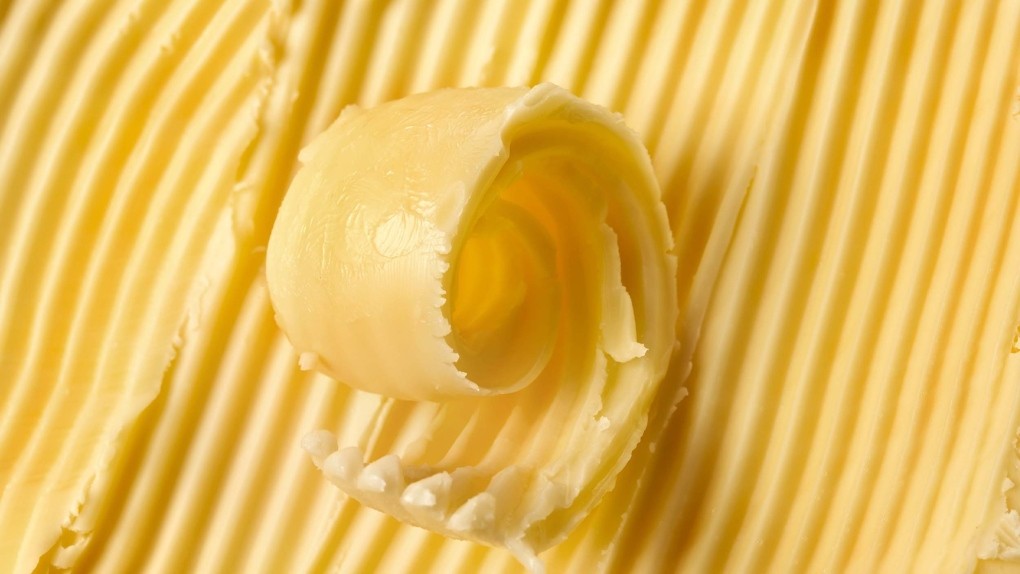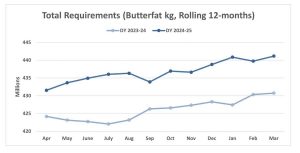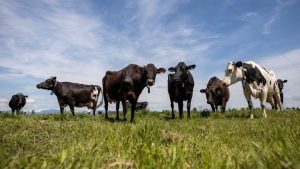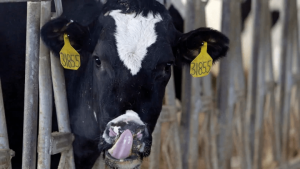
But several researchers say we can’t draw this conclusion without knowing more.
“Many Atlantic Canadians have noted butter is harder,” said Sylvain Charlebois, senior director of Dalhousie University’s Agri-Food Analytics Lab. “This has put the dairy sector on the defensive, because it’s obvious something is going on.”
Use of palmitic acids in the cows’ feed is one plausible cause, he said. While palm oil and its derivatives are in many things, Charlebois said, dairy should be treated differently because it is a government-subsidized industry in which he believes more transparency is deserved. Dairy boards in Quebec are now set to look at the issue, which he speculates could trigger regulatory changes involving limits or penalties, something seen in other parts of the world such as Europe, he said.
David Christensen, an emeritus professor at the University of Saskatchewan, who has participated in research on behalf of the Dairy Research Extension Consortium of Alberta, said palmitic acid in feed has been proven to increase milk fat yields considerably, an explanation for why it is of such interest to farmers.
But use of the product in feeds is not new, he said, some farmers have been using it for 20 years.
Paul Gaunce, chairman of the Dairy Farmers of New Brunswick, said palmitic acid is used in feed some farmers are using in the province to feed their cows, but its use is limited.
“It’s an expensive ingredient,” he said. Of the 172 dairy farms in New Brunswick, he said he couldn’t estimate the per cent choosing to use it, but it isn’t everyone.
There is currently no research proving this is making butter harder, but Dairy Farmers of Canada is researching various components of this issue, he said.
But anecdotally, many people believe that their butter is harder than it was in the past.
Chris Wright, owner of Wright’s Bakery in Salisbury, said his bakers think that the butter now has a higher threshold to melting, in other words takes longer or requires a higher temperature to soften and break down. Charlebois, meanwhile, conducted an informal Twitter poll earlier this month and found a slim majority of respondents thought their butter was harder.
University of Guelph food microbiologist Keith Warriner said an increase of saturated fatty acids would make butter harder, but how butter is being processed is also another explanation.
“If you process butter too quickly, it can be too hard,” he said
Palm oil in feed can give benefits to butter, such as preventing butter from going rancid as quickly, he said.
“Whatever you feed cattle will appear in milk,” said Warriner.
Warriner said we can’t rule out the possibility that people are just noticing now that butter is harder, but it may be no harder than it was a few years ago.
Christensen said “the problem is nobody is actually measuring the hardness of butter.”
There is a method that was developed about 70 years ago to do this, that in simple terms, involves dropping a steel ball into butter and seeing what happens, he said.
Often consulted by major players in the dairy industry, he is advising more research into the issue of hardness, adding that the contrasts between Canadian butter and imported butter need to be examined, as does processing, storage and temperature conditions and palmitic acid differences.
Right now, he said “industry doesn’t know if it is a real problem, a manufactured problem or something else.” But if it is on the minds of consumers, it also has dairy producers concerned, he said.
– The Local Journalism Initiative is funded by the Government of Canada. Initiative de journalisme local est financee par le gouvernement du Canada.

























